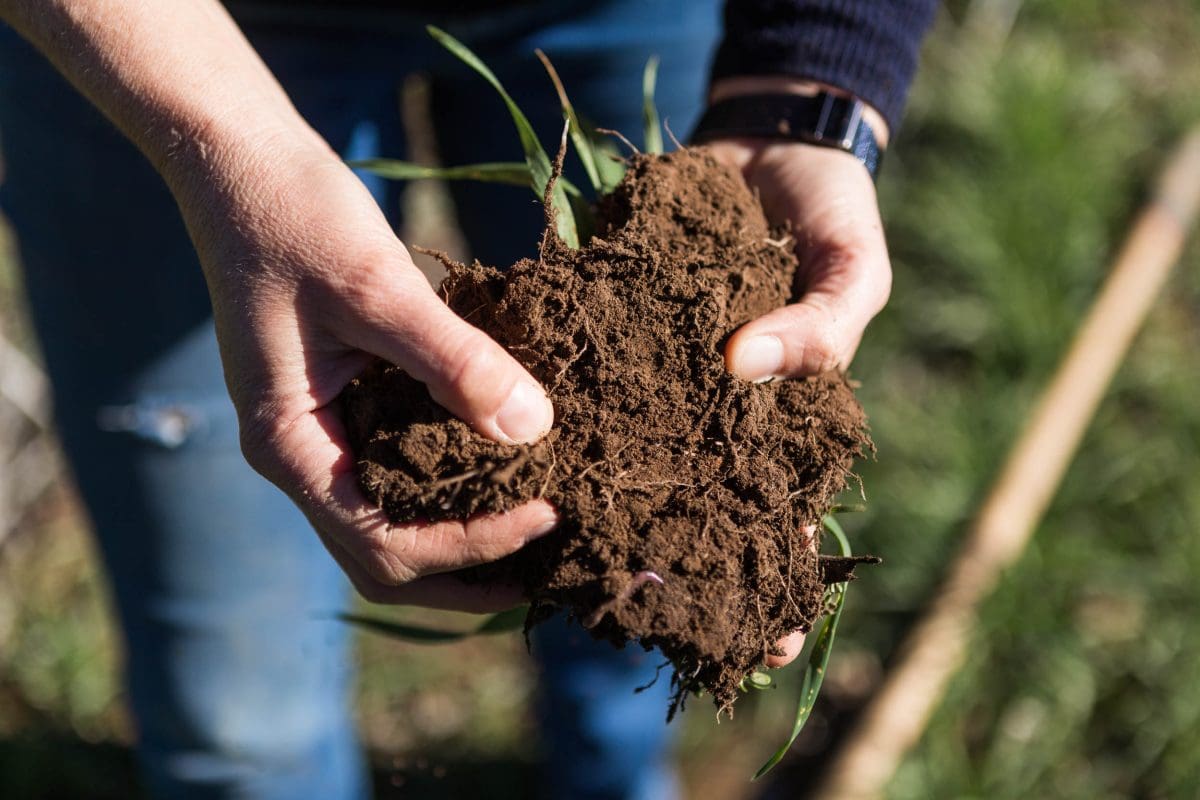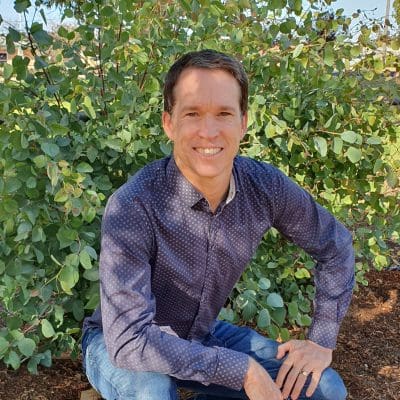
Regenerative agriculture was the key focus of a recent webinar hosted by the UWA Public Policy Institute. Photo: Soil CRC
SHOULD the term ‘regenerative agriculture’ be changed to encourage more growers to adopt the practices encompassed within the emerging industry?
This was the topic that was debated by speakers during the University of Western Australia Public Policy Institute’s recent webinar, Sustainable food systems: food production & security in a changing climate.
Based in Western Australia, Wheatbelt Development Commission director regional development, I-Lyn Loo, called the term “divisive”.
She said using different language may reduce the level of pull-back from growers and others in the agricultural industry.
“In the end, regenerative agriculture is quite a contentious term still,” Ms Loo said.
“It is getting more mainstream now… as we are moving into the early adopter phase.
“There are challenges in accepting that term.”
She said often the term implies that growers need to change their practices in order to consider themselves good land managers.
“I feel that our farmers, they love their land, and they are so connected to it.
“I think unfortunately we have talked about the narrative in the wrong way or a different way that challenges that value.
“So, if you become regenerative, you were considered a bad land manager previously, so therefore you have to change.”
Ms Loo said this was never the intent of the regenerative farming movement and, if a language change will alter perceptions, then it may be necessary to affect change.
“If regenerative agriculture is divisive language, then we may have to move away from it into more outcomes-based conversations, like natural capital accounting, talking about carbon sequestration into the soil and soil health and recovering biodiversity.”
Ms Loo is currently completing a project to investigate drivers for regenerative agriculture in Australia as part of the Winston Churchill Trust Fellowship program.
The project is also looking into ways to incentivise adoption of these practices, such as through consumer behaviours and price premiums.
A relatively new farming movement, regenerative agriculture includes practices that works to improve soil health, carbon storage and biodiversity as well as limit external inputs.

Wide Open Agriculture managing director Ben Cole
Wide Open Agriculture (WOA) founder Ben Cole called the practice “farming with nature and not against it”.
Located in WA, WOA is an Australian leader in the regenerative agriculture movement with all farmers contracted to provide produce to the company pledging to follow these farming practices.
He told the webinar that WOA sees the movement as an “important alternative” to traditional farming systems.
“Conventional industrial farming has played an incredible role for producing food and has, since its introduction in the ‘60s, brought immense gains but…a lot of those gains have become quite wasteful,” Dr Cole said.
“We believe farming systems are starting to turn and shift and farmers themselves and agronomists and input companies are starting to think: Is there another way of producing healthy nutrient-rich food?
“Perhaps there may be some reductions in yield but the overall impact looking at the wider holistic impact is dramatically reduced.”
Mr Loo said in her discussions with Wheatbelt growers, she believes these practices are widely used, just not under the official banner of “regenerative agriculture”.
“I think, talking about Western Australian farmers, a lot of them are doing it anyway.
“The practices like minimum till, keeping cover crop, incorporating livestock, it is part of the system, it is part of what they do anyway.”

I-Lyn Loo is investigating why growers adopt regenerative agriculture practices. Photo: Winston Churchill Trust
Practices to outcomes
Alongside potentially re-thinking the terminology, Ms Loo said she is also seeing a shift from defining success by increasing land management practices to quantifying improved soil and biodiversity outcomes.
She said this is a positive step considering not all regenerative agriculture practices will suit every property.
“More and more what I am seeing globally is people are moving from defined practices, because they are quite different from farm to farm, place to place.
“They are defining it as outcomes based.
“They are talking about improving soil health including carbon sequestration, recovering biodiversity and some of them include things like… sustainability of the communities and of course the sustainability of the businesses.”
Dr Cole said he sees that the focus should also be on practices that are resulting in measurable outcomes for the soil and the wider environment.
“Whether that is around the word regenerative, we don’t really care, but it is around looking at practices that are making tangible impacts on climate change and biodiversity.”
Global pressure
From multi-national companies and government policy, regenerative agriculture practices are increasingly becoming part of the conversation around food production.
Ms Loo said food companies General Mills and Nestlé are examples of organisations pledging to increase the amount of ingredients produced at regenerative farms.
In 2019 General Mills committed to advance regenerative agriculture on 1 million acres of farmland by 2030 as part of an overall climate and water policy.
Nestlé also pledged to source 50 per cent or 14 million tonnes of its ingredients through regenerative agricultural methods by 2030.
She said governments are following the lead of companies and introducing sustainable agriculture and regenerative farming targets and police.
Ms Loo said one key example of this was a chapter in the free-trade agreement between the European Union and New Zealand which committed to sustainable food system principles.
“This is a very fascinating development for me; it is not just the food companies, now we are moving into policies.”
As part of the webinar event, Ms Loo and Dr Cole were also joined by UWA School of Agriculture’s Caitlin Moore and OzHarvest chief executive officer and founder Ronni Kahn AO.
Grain Central: Get our free news straight to your inbox – Click here

I am a retired, 72 year old individual who is a supporter for Regen Agriculture and open to learn more from your experiences. I live in the desert region of Southern Nevada and have actively been consulting with the local hemp growers. Our dirt (SOIL) is very sandy, lots of clay, and full of rocks, along with being exposed to the above ground nuclear testing explosions at the Nevada Test Site. Enough said, we are attempting to regen and build our dirt into soil!
Any suggestions we’re open to your expertise!
Regards,
The Geriactric Consulting Group of Southern Nevada
Walt M.
Respectful tension of difference is the key to creative thought.
If the learner perceives a difference between the word “regenerative farmer” and the way they describe themselves,it becomes an incentive to review the causes of the tension.
Real learning is not about comfort, but it must be in an environment where difference of view must be respected and honoured. If the learner has difficulty more personal work is required to prepare them for conversation.
For humans as a species to persist, their relationship with the ecosystem has to be in equilibrium. From the UNESCO data, we are not, by most measures. We have been running it down for 50,000years at an ever accelerating rate.
“I feel that our farmers love their land, and they are so connected to it.
“I think unfortunately we have talked about the narrative in the wrong way or a different way that challenges that value.
“So, if you became regenerative, you were considered a bad land manager previously, so therefore you had to change.”
We should not conflate love of country with ignorance of it, or ourselves.
We all live and learn by our mistakes, and those of our teachers without being too harsh. Equally those that are on the regenerative pathways who judge, forget where they come from and the importance of error in the learning process. The important thing is to minimise the risk and cost of learning through errors.
This is exactly why, at our modest level, the “4 per 1000” Initiative proposed a contribution to the definition of “regenerative agriculture” (available on our website http://www.4p1000.org) in order to help all actors interested to working for regenerative agriculture to find their place. Thank you for this article very interesting and pointing the right question.